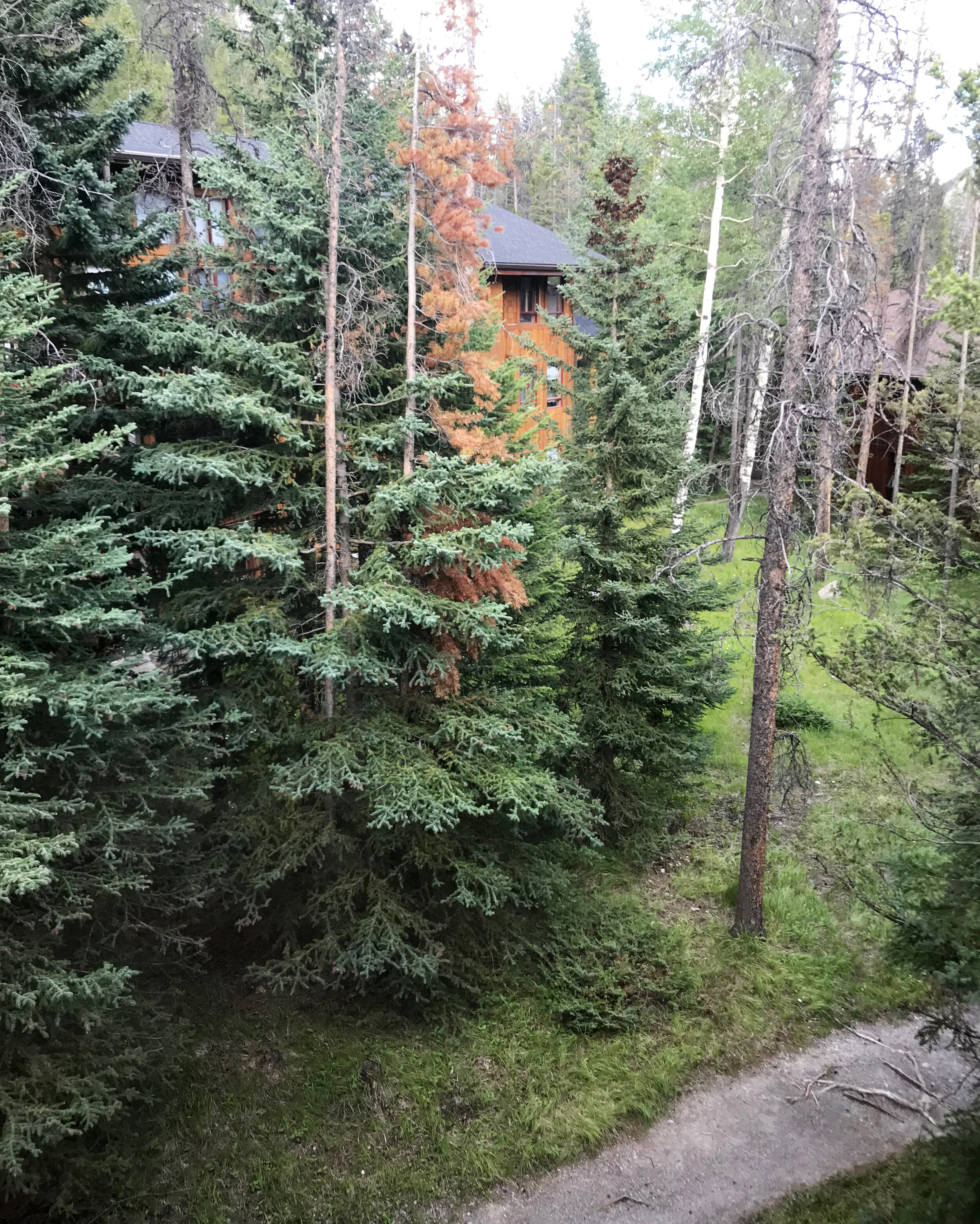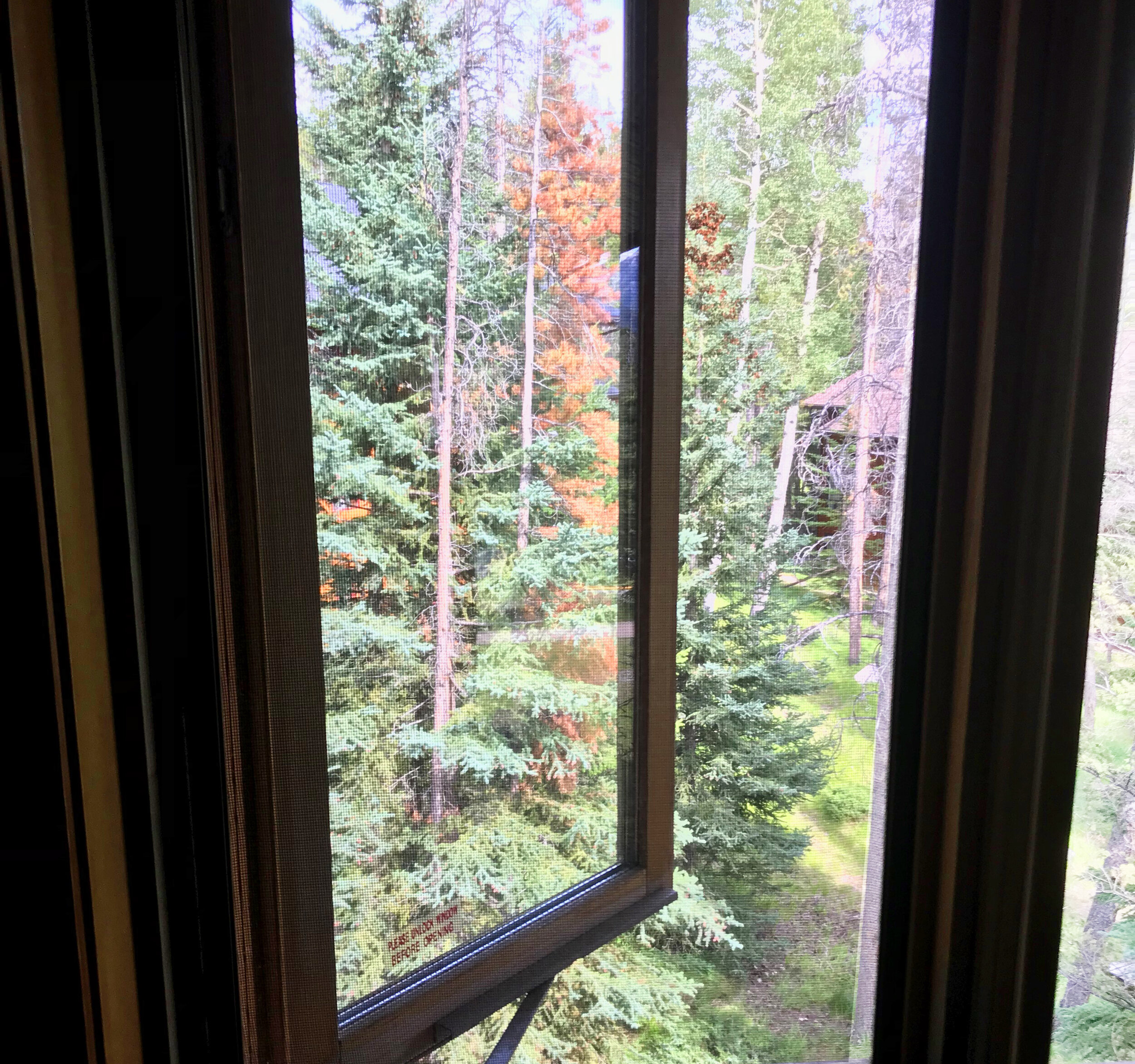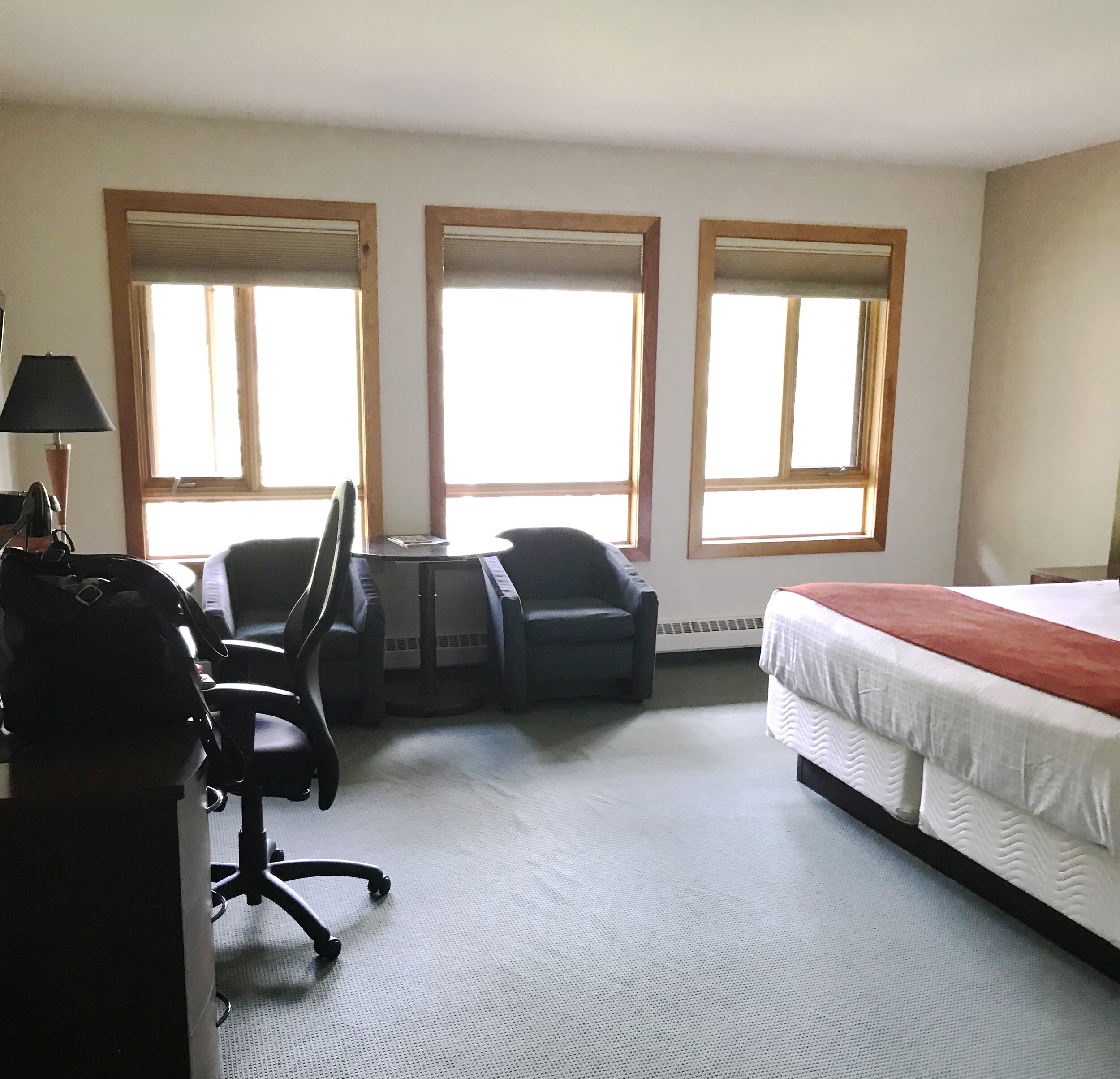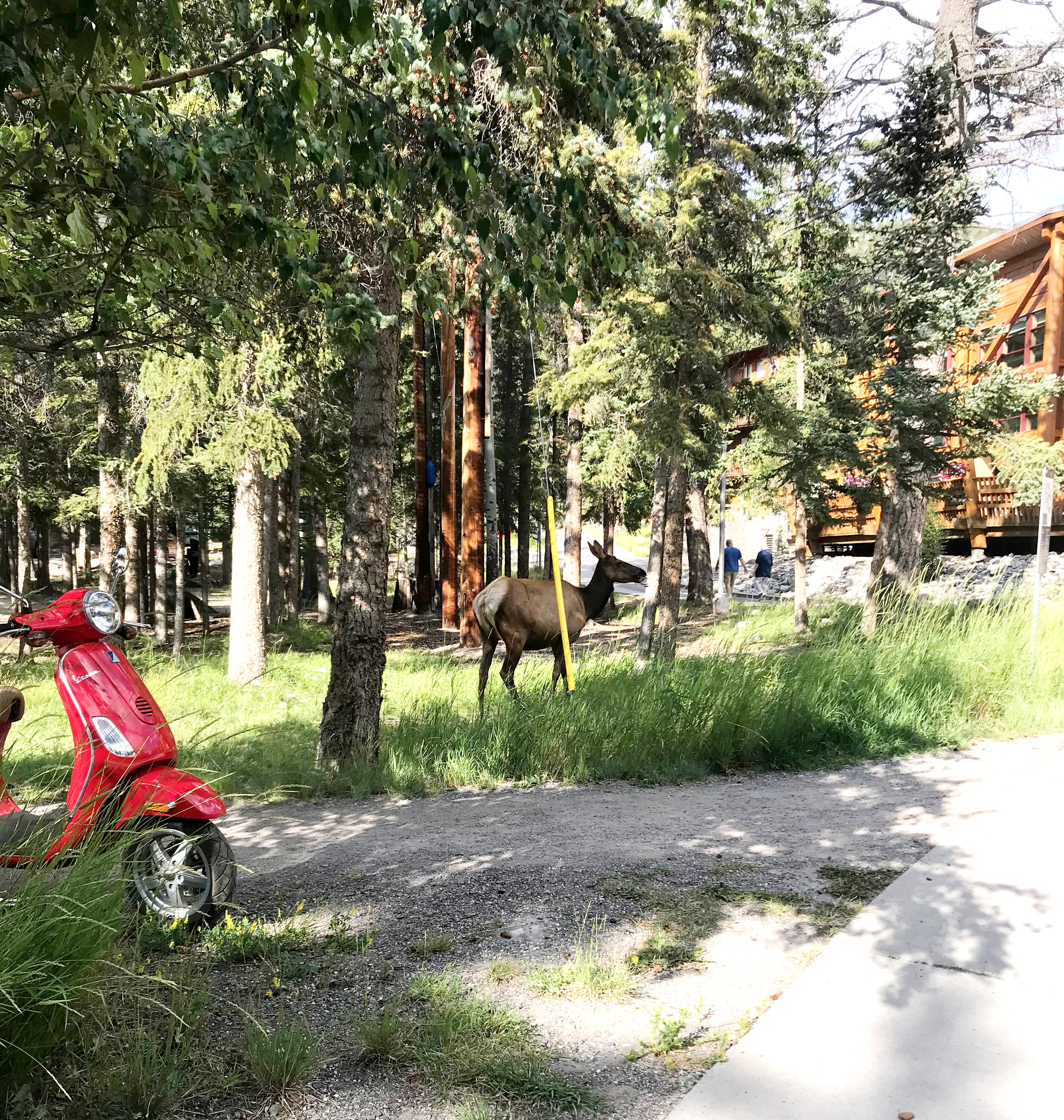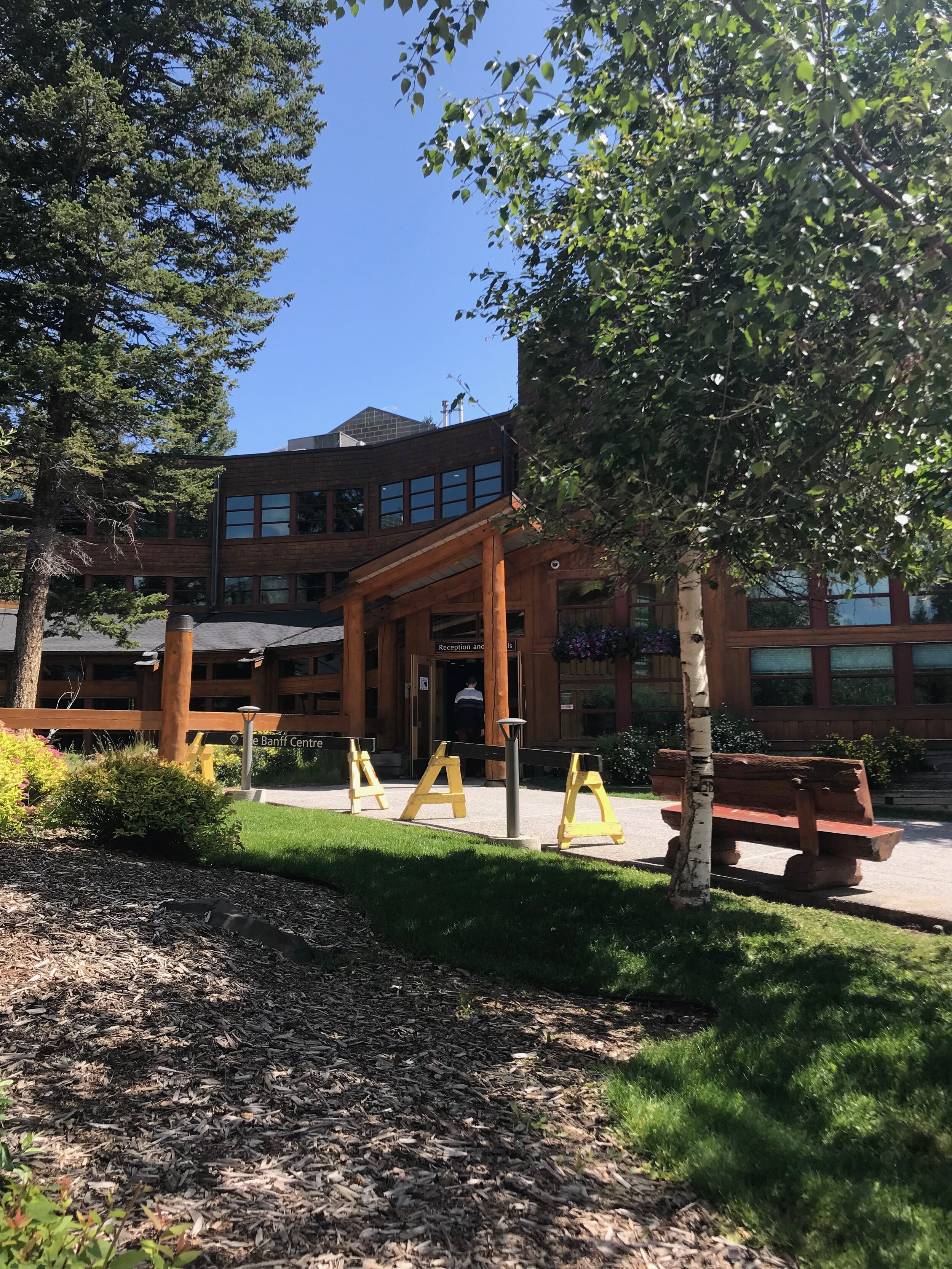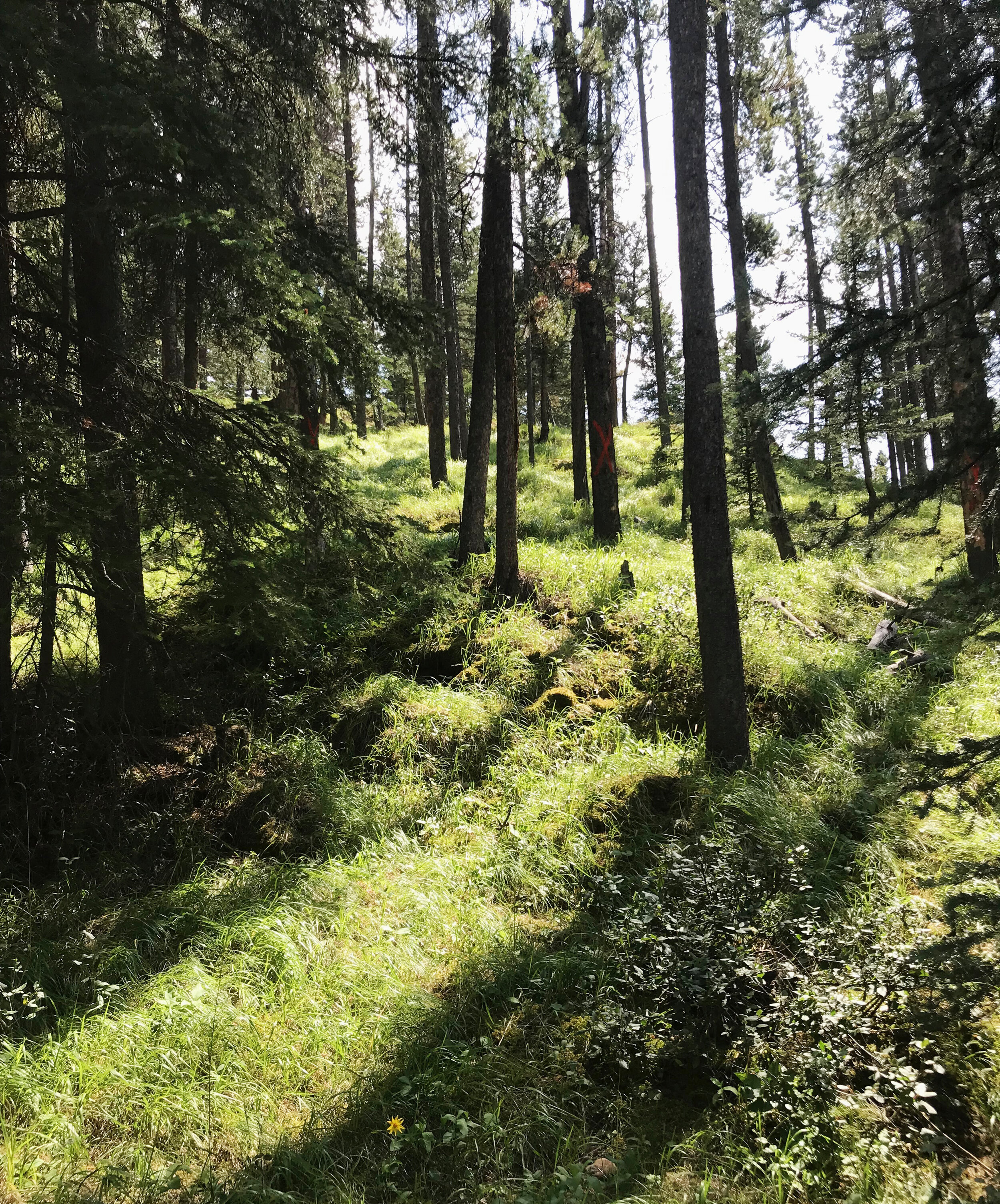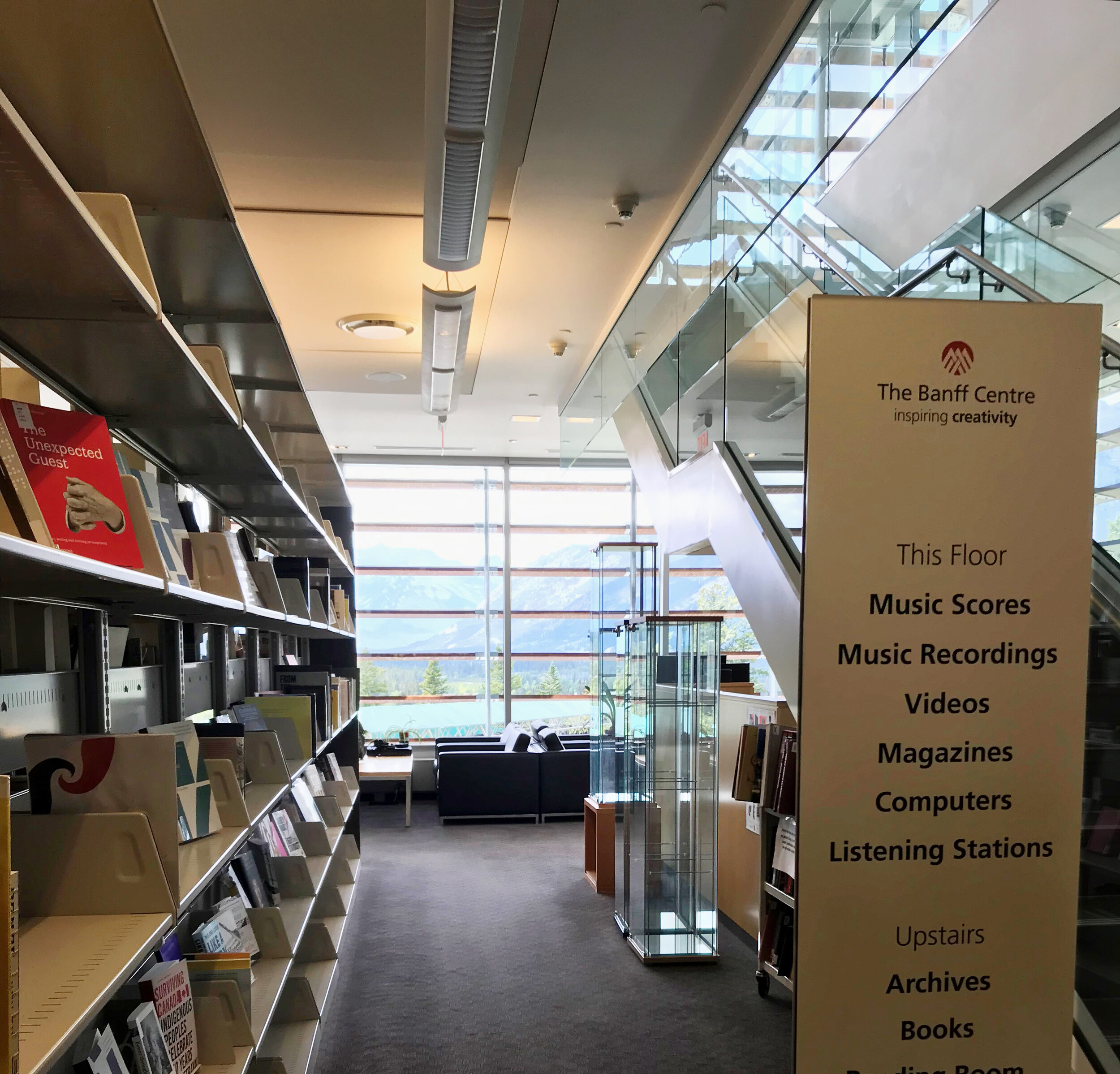I’ve been meaning to share this post for almost a year, hoping to help someone googling “what to bring to a Banff writers retreat,” as I did an hour before my flight.
But as I write this now, most of the world is under some form of lock-down, the writing retreats are on hold, and the parts of my brain responsible for long-term memories appear to be self-isolating.
Still, I’m going to do my best to share a few photos and thoughts, as well as a handful of tips from some of the friends I met at the Banff Summer Writers Retreat. I learned a lot from even the faintest interactions with the other writers in my cohort, but one thing stood out above the rest as important to know before arriving: There is no one right way to do a retreat.
Some people wrote a few hours a day, some wrote for 12, some went to workshops, some went hiking, some worked in town, or checked out performances on campus, and some—like me—spent most of their time in their room.
A wonderful time was had by all.
And while I wouldn’t ask for even one different thing from the Banff Center—except maybe that they hire me and house my family ad infinitum—I would do a few things differently in terms of how I organized my space-time continuum.
Even with just one coffee a day, I spent a good amount of my meal card on fussy, non-dairy espresso drinks, so next time I’d bring my own coffee-making set-up. I’d pack a little espresso machine for my room or a Bialetti to use in a nearby shared kitchen.
I’d also carve out time on my first day to pick up some fresh fruit, vegetables, and breakfast snacks. Here’s a google map with all the Banff-area grocery stores pinned to it. Regrettably, I went to only one of these stores near the end of my stay because I was too scared at the beginning to miss a productive moment. What a mistake! Turns out I would have been better equipped to work in my room longer had I purchased a few provisions.
Another reason I didn’t jump on shopping right away is because I have some mobility issues, so walking into town was not easy for me. The electric-biodiesel Banff Roam bus stops at the Center every 30 minutes, and while I somehow never saw it, I hear it’s jazzy-looking in a covered-in-wildlife-photos kind of way. For us antsy city folk, there are no easy ride-sharing apps in rural Alberta (good for them), but you can easily call an inexpensive cab (403-762-0000 or 403-762-4444).
None of this is to suggest the walk itself is difficult or long—the trip into town is lovely for most people and I did it once—I just should have packed with more self-sustainability in mind. If you do need extra toothpaste or soap, there is a little coffee shop called Le Café in the Sally Borden building that has a few (and by few, I mean scant) toiletries, so if there’s something you think you might need, pack it. Depending on the time of year, you’ll want to bring sunscreen, insect repellent, and many layers of clothing (this was true even during summer).
Speaking of walking, a few of us—okay, ME—felt a bit scared of being gobbled up by the well-appointed teeth of nature’s roaming splendor.
I hadn’t heard of “bear bells” before I got to campus, but apparently they don’t work—or at least not in the way you might hope. A parking enforcement officer once told me that flashing blinkers on idling cars were “come and get me lights,” and I get the sense bear bells work in a similar way. And even if the bear bells slightly deter animals from attacking you, I can’t say the same about the other hikers. Don’t be annoying.
Good news is bear spray is apparently very effective against most predators!
Bad news is I didn’t bring any.
But I don’t think anyone else did, either? I might be overly cautious (read: neurotic), but the abundantly-posted warnings about how to avoid dangerous animal encounters made me wish I had anything aerosolized (Aqua Net, Axe Body Spray, whipping cream?). So like I said off the top, get to a grocery store as soon as possible. You never know what might save your life.
And now to accommodations. As far as I could tell, each delightful room in the Professional Development Centre was equipped with a desk, a view, and some task lighting. I have some sleep issues and requested a quieter room ahead of time, so the only thing that kept me up was room service (because I called them, a lot), and my own whirring brain.
After a few days of typing at my desk, I noticed some of my old writing injuries coming to the fore—I’m sporty like that—so if there’s something you can travel with to make your workstation more ergonomic, I’d consider bringing it. Fortunately, the minor discomfort I felt from my in-room desk propelled me to work in the library (which is beautiful working space, but also quieter than the dead), or other available workrooms, which you’ll learn about during your orientation. For what it’s worth, I didn’t have issues at any of the other desks around campus.
One of the more unexpected amenities provided by the Banff Centre was simply the gift of quiet time. The writing retreat gave me a space to write, but it also granted me solitude—a solitude which precipitated a deep reflection on the material I was writing about. I went to Banff to work on a semi-autobiographical graphic novel about my childhood in Winnipeg. And while I had been writing for a few months beforehand, I decided to plunge into the hardest parts of the story—my mother’s alcoholism—while isolated. This concentrated time at Banff allowed me to make sense of things that had previously eluded me. I never cry, but lo, there were tears. Good, important, much-needed tears.
Here are a few quick tips because this post is getting so long it’s starting to look for its own book deal:
One of the writers on our retreat (Amira Elghawaby) set up a group chat for our cohort in WhatsApp. This was a great way to learn about events or activities happening on campus, or to connect with other writers for coffee, breakfast, or a drink.
There is an optional reading night as part of the retreat, which many people participated in. If you have books to sell, pack them.
Once you’ve completed your retreat, you qualify for several alumni discounts (including a steeply reduced room rate). Details here.
Some of the more exciting parts of the retreat were the magnitude of the landscape and campus, and the sheer delight I felt walking between the Centre’s many impressive buildings. I was struck by how fantastic it was that each outpost was brimming with creative people working on a project dear to them. I often felt giddy just being there doing absolutely nothing.
I filmed some of these quiet moments because I loved the in-between surprises, like riding up the outdoor elevator to the dining hall; the adorable Banff Centre utility truck that tootled down the roads; or the many elk and deer who wandered freely on campus. I also filmed my arrival, my room, and probably too many rocks, but if you’re curious to see this shaky footage, you can find it under the Banff Center stories pinned to my Instagram page.
Now, at long last, I turn this post over to a handful of writers I met at the retreat. The answers were originally posted alphabetically but then devolved into randomness (I’m afraid to move page elements around). I also take ownership of the bios, which I cobbled together from at least three corners of the Internet.
———
Melissa Gismondi. An award-winning writer and multimedia journalist, Melissa was selected by acclaimed author Charlotte Gray as a Writers’ Trust of Canada Rising Star. www.MelissaJGismondi.com
I'd suggest bringing some sort of camping soap-type bar that you can wash your clothes with. I ended up borrowing one from another writer, and it was a godsend because I hiked everyday and found my clothes quickly got dirty.
Bringing one or two books of essays or short prose really helped get me into the writing mood when I needed a boost. I was very worried about self-inflicted pressure to produce during the retreat and I found it helpful to read to relieve some of that pressure.
Another thing that's worth noting: I learned to see any daydreaming time as "work" time. All writers need that space to think and it can be nearly impossible in the hustle and bustle of everyday life to get it. So giving yourself space throughout the day to let your mind wander is incredibly valuable.
———
Brad Aaron Modlin. Author of Everyone at This Party Has Two Names (poems) and Surviving in Drought (stories). Brad is the Reynolds Endowed Chair of Creative Writing at University of Nebraska, Kearney. www.bradaaaronmodlin.com
I was really glad I'd brought hiking boots for the nearby trails. Several of us had headaches and trouble sleeping at first--maybe from the elevation--so I wished for aspirin and chamomile tea. I'd recommend bringing a Kindle: if someone recommends a book, you can get it right away.
Cool art happens at Banff. I was glad to attend performances by string quartets, jazz bands, and improv dancers. The library lent me a record player and vinyls of Joni Mitchell and punk rock compilations.
I find it helpful to make two writing plans, or a range of goals ahead of time. One that seems more realistic, and one more ambitious. It also helps to be in medias res when you arrive. Working on a half-completed story rather than a brand-new one makes for an easier Day One.
———
Daniel Zomparelli. Author of books, host of the podcast I'm Afraid That. @dannyzomps
I was genuinely surprised how much writing I completed at Banff. I'm usually a very slow writer but seeing everyone work so hard inspired me to do the same!
The thing I was happy I brought was all of my skincare stuff. The things I wish I had brought were a travel mug (they sell them there but I hate accumulating too many travel mugs, lol), and sleeping aids because I can't sleep for the first several nights away from home.
———
Ama Scriver. Fat, loud & shouty freelance writer. Amanda is a social media strategist, community builder, and in-demand public speaker. @amascriver
There is a small fridge, but you can't make full-fledged meals. I ended up buying things like bananas, yogurt, hummus/carrots, and granola bars. It saved me a lot of money and kept me from getting hangry.
Remember to take part in ALL the free events on campus! The whole experience is pretty overwhelming and you might be tired, or super focused on your work, but the best advice I got from another friend who went to Banff was to stop and take advantage of every moment. I'm SO SO thankful I did this because I got to see and participate in so many amazing events (jazz, dance freestyle, etc.) and they are honestly some of my best memories from there.
Whatever you do, make it a point to go to the pool/spa at least once a day. I usually went for at least an hour to decompress and it always made me feel so much better.
Depending on how long your retreat is (ours was two weeks) remember you're going to have to do laundry - so bring coins for the washer/dryer and soap/dryer sheets if you can, or else you'll have to buy them in town. This was an expensive lesson I learned.
———-
Tasnuva Hayden. Fiction Editor at filling Station Magazine. @tasnuva_hayden
I'm a total minimalist when I travel so I really only bring things that I will actually use. I did plan to go hiking, so I brought a pair of sneakers that could double as gym shoes, a baseball cap, and a raincoat/windbreaker style jacket. For this purpose, I also packed my Swell water bottle, plenty of sunscreen, and my mini backpack that was great to use on campus as well as for hiking. I also brought my swim suit for the campus pool, and for the hot springs.
Other than that, I brought about three books to read over ten days, my laptop, my smartphone, one notebook, and a couple pens and one yellow highlighter.
I mostly dressed in layers. The mountains can get cold at night and Alberta weather is just unpredictable in general. I brought comfy clothes, such as yoga pants, shorts, t-shirts, and some long sleeved items. I also brought a pair of high heels for the night of the reading, and a couple of dresses for attending things like the free classical music concerts.
Top (primary) image photographed by mastermaq.


